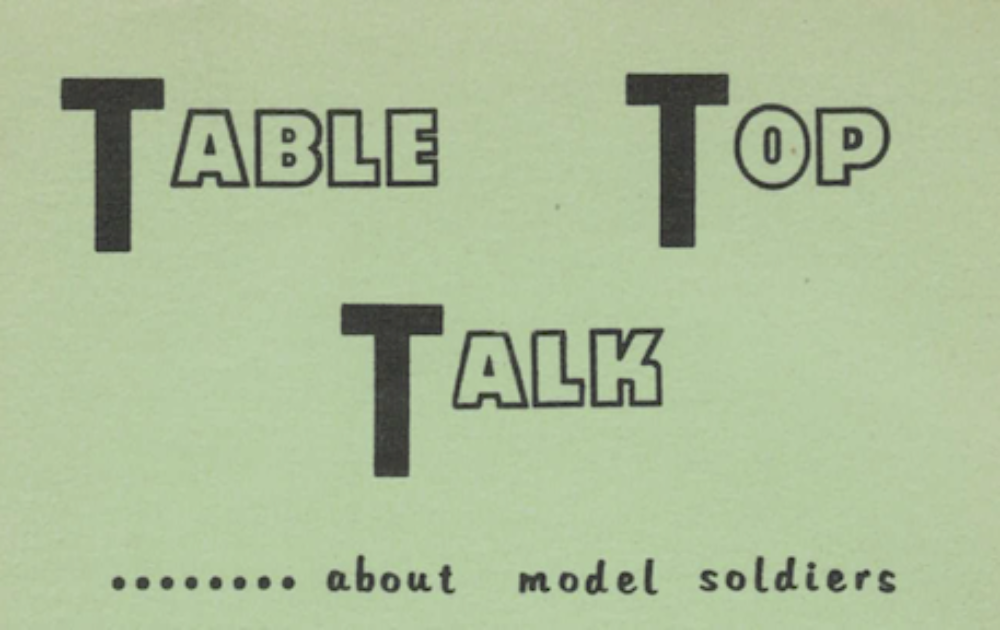A little something to fit in with the theme of last week’s Rules for Modern War Games post…
War Game Generalship
Attack and Defense in
Modern War Games
by Lionel A. Tarr
War Game Digest, September 1957
Two questions face the attacker in modern war games. 1) When to make the attack, and 2) How to attack. The question of “when” depends upon the course of the game and the action of the opponent. Any good war game general will soon develop a sixth sense (not always right!) when he believes it is time for the attack. Then the question is “how” to arrange his forces for the attack. And here, in modern war games at least, we may be of some help.
Single tank action, supporting attacking infantry, will invariably fail against an enemy commanding anti-tank weapons. To successfully use tanks a commander must amass enough weight to punch a whole squadron through, and beyond the enemy lines. This may take up to 2 or 3 squadrons of armoured fighting vehicles to do the job.
The method is to mass your armour opposite your opponent’s weakest front (if known). Then erupt in a mass, in an arrowhead with light tanks in the lead, and medium and heavy tanks on the flanks. The object is to drive straight through the enemy’s lines, with the light tanks that have survived carrying straight on ahead cutting the lines of communication and harassing the rear area.
The medium tanks consolidate the breach, mopping up any resistance, whilst the heavy tanks tern and roll up the flanks. Lorried infantry are now rushed into the breach and combining with flamethrowers, bombers (hand grenades) and rifles, supported by·rapid fire weapons (tommy gunners and machine gunners), follow the heavy tanks on their—mission.
A further company of infantry, with its own light support weapons, pushes forward in the wake of the light tanks, and these troops can be further supported by`a tactical wing of ground attack aircraft. p With all phases of the breakthrough attack working at once, your opponent will soon be reeling in confusion, groggy from the powerful thrust you have a him.
There is a defense for this type of attack and it hinges on a defense in depth. Give all defensive positions a good light anti-aircraft cover sited in positions where attacking planes can be engaged by two or more batteries simultaneously. Anti-tank guns should be set up likewise, preferably behind the front lines, and where two can fire simultaneously on the same area. Allow the initial tank thrust to penetrate without engaging except with flanking guns if possible. Then as soon as they break through your lines, pinch them·off from the infantry that follow (interdiction). Your anti-tank positions should be able to cope with the light tanks that break through, and the other tanks unless quickly supported by infantry, will run foul of your bazooka’s and other anti-tank weapons. The lorried infantry are quite vulnerable to mortar attack and machine gun fire, and only when in armoured half-tracks is it necessary to engage them with heavier weapons.
This modern war game depends a great deal on the Concealment Rule, which I use as follows: Troops moving at night, or out of observation during day moves, can be moved upon the map only, and not placed upon the table. Only troops observed, or under observation need be placed upon the table. If full advantage of this rule can be taken, the attacker can gather his forces together for the big push. The attacker must then gamble on certain features of the terrain being lightly held, or (if troops are in the open) that enemy air patrols don’t observe his massing for the attack.
The defender, in turn, must take a gamble at laying out his defenses, while both attacker and defender must hold themselves in readiness to swing over to the role of the opposition, i.e. the attacker to the defense, and vice versa.
